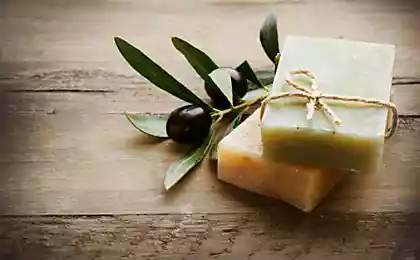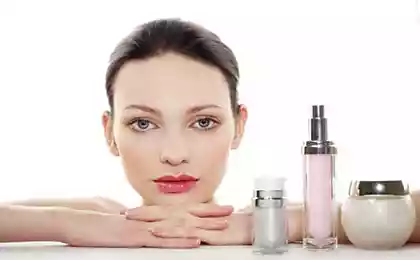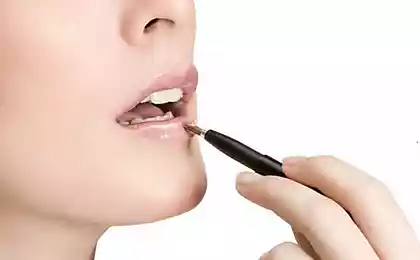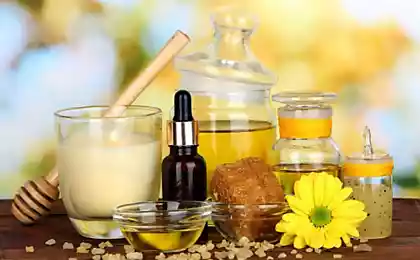397
How to verify the truthfulness of the composition of cosmetics

In recent years consumers have shown increasing attention towards their purchases. This is evidenced by the growth of organic and environmentally friendly products, whose sales remain unchanged, despite the current economic crisis. One of the factors to be able to consciously choose, to have the right tools on information utilization.
this meets the requirements of INCI (international Nomenclature of cosmetic ingredients), which since 1997 has been allows you to know exactly what is in cosmetics. INCI is undoubtedly a victory for consumers, but can be an asset to cosmetic companies, which with the help of this tool it is possible to effectively differentiate from competitors, which are often "green" and "organic" in name only.

INCI nomenclature contains some terms in Latin (Botanical name ) while all the chemical ingredients have an English name. The dyes used in accordance with the Index number of the Color (eg CI 45430)
The ingredients are listed in descending order: original —is present in greater proportion at the bottom of the list is a smaller percentage. Less than 1% of the ingredients can be listed in any order.
Databases exist that can give an idea about each of the ingredients that consumers may encounter when reading the INCI.These databases, conscious consumers are learning to avoid petroleum products, silicone and many other synthetic substances. This will allow you to choose makeup really healthier and environmentally friendly.
Common name INCI Name Purified water water (Aqua) [ 1 ] Sodium Coco sulfate Sodium Coco-sulfate [ 1 ] sodium Lauryl sulfate (from coconut oil ) sodium Lauryl sulfate [ 1 ] sodium Sulfate, Laureth (from coconut oil) sodium Laureth sulfate [ 1 ] Computers (from coconut oil) Medicines [ 1 ] Disillusioned Disillusioned * [ 1 ] Citric acid Citric acid * [ 1 ] Paraben Methylparaben [ 1 ] Cetyl alcohol Cetyl alcohol [ 1 ] Vitamin E Tocopherol [ 1 ] Beeswax beeswax * [ 1 ] Vegetable glycerin Glycerin [ 1 ] Oat bran Avena sativa (oat) bran [ 1 ] Shea Butter Butyrospermum Parkii (Shea butter) [ 1 ] Passion Fruit Juice Passion fruit Juice [ 1 ] Red rose water Rosa Damascena Flower water [ 1 ] Raspberry extract Rubus Idaeus (Raspberry) fruit extract [ 1 ] Yucca herbal extract Yucca Schidigera stem extract [ 1 ] Aloe Vera gel the Aloe leaf leaf juice [ 1 ] tea tree Oil Melaleuca Alternifolia (tea tree) leaf oil [ 1 ] Peppermint leaf oil Mentha Piperita (Peppermint) Oil [ 1 ] Peppermint leaf oil Mentha Viridis (Spearmint) leaf oil [ 1 ] Wintergreen leaf oil Gaultheria procumbens (Wintergreen) leaf oil [ 1 ] Oil of lavender Lavender Angustifolia (Lavender) Oil [ 1 ] Cinnamon leaf oil Cinnamomum Cassia leaf oil [ 1], Lemon peel oil, Citrus Medica Limonum (Lemon) Peel Oil [ 1 ] Valencia orange peel oil Citrus Aurantium Dulcis (orange) Peel Oil [ 1 ] Pink grapefruit peel oil Citrus Paradisi (Grapefruit) Peel Oil [ 1 ] Roman chamomile oil Anthemis Nobilis flower oil [ 1 ] Jasmine oil, Jasmine officinalis (Jasmine) Oil [ 1 ] Olive oil Olea europaea (olive) Fruit Oil [ 1 ] Saponified oil of coconut Sodium Cocoate [ 1 ] Saponified oil of palm Shovels sodium [ 1 ] Hemp oil Hemp seed Oil [ 1 ] jojoba Oil Simmondsia Chinensis (jojoba) seed Oil [ 1 ] Sunflower oil Helianthus Annuus (sunflower) seed oil [ 1 ]
Source: /users/1077
6 misconceptions about healthy eating
System wireless charging eco will soon appear on the streets of London






















